Enjoying dim sum is undeniably one of the top things to do in Kowloon. It’s so iconic that it deserves a special place on any traveler’s bucket list. This legendary culinary experience has won the hearts of countless food enthusiasts, making it a must-try in the bustling city.
Here are 10 must-try dim sum dishes in Hong Kong.
1. Siu Mai (燒賣)
Among the most renowned dim sum dishes is the pork, shrimp, and mushroom dumpling, also available in a fish variety often sold as street food. In Hong Kong, siu mai is easily recognizable by its yellow skin and orange toppings of either fish eggs or diced carrot, though this dumpling comes in many variations.
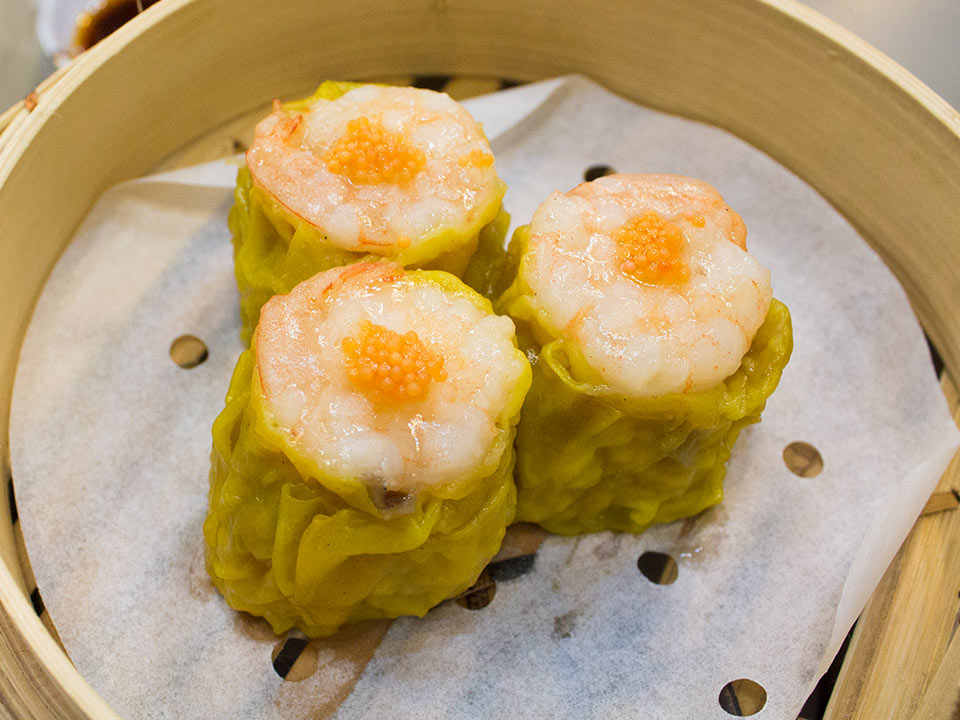
2. Shrimp Dumplings (蝦餃)
Har gow, also known as shrimp dumplings, is the star of dim sum. Many restaurants make it their specialty. These dumplings have a thin, see-through wrapper filled with yummy prawns. They’re small enough to eat in one bite but still strong enough to hold the filling. Eat them while they’re hot and juicy for the freshest taste.
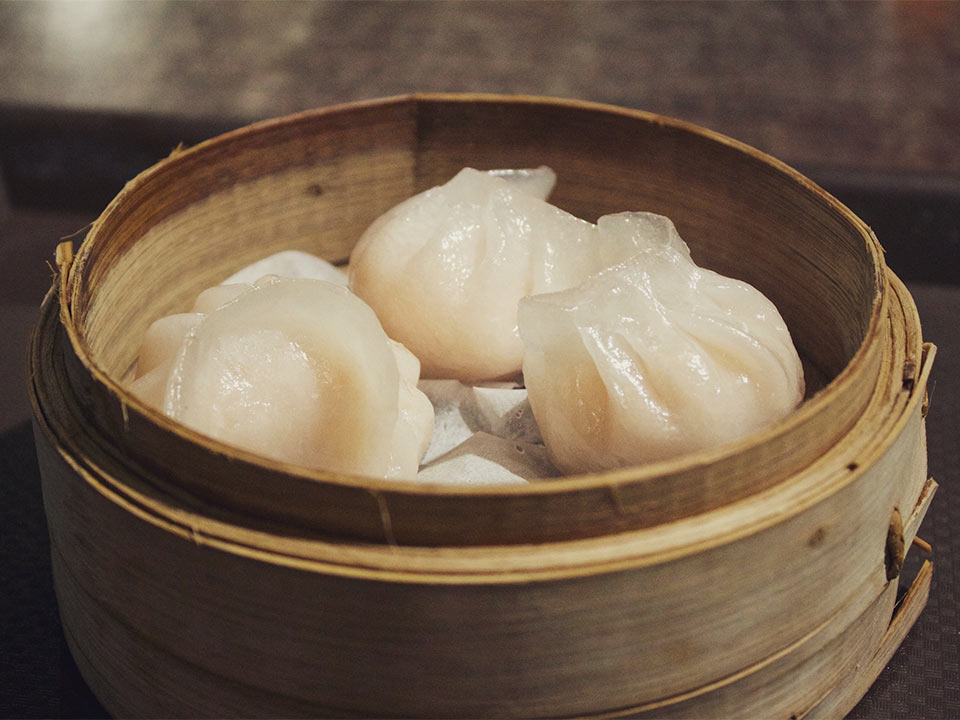
To see how skilled a dim sum chef is, count the pleats on the har gow wrapper. Traditionally, there should be at least seven pleats, but the more, the better!
3. Char Siu Bao (叉燒包)
Char siu bao can be either steamed or baked and always features pork in a delicious sweet barbecue sauce. The steamed version has a soft, fluffy texture, thanks to a combination of yeast and baking powder in the dough. On the other hand, the baked version tends to be darker in color with a shiny glaze.
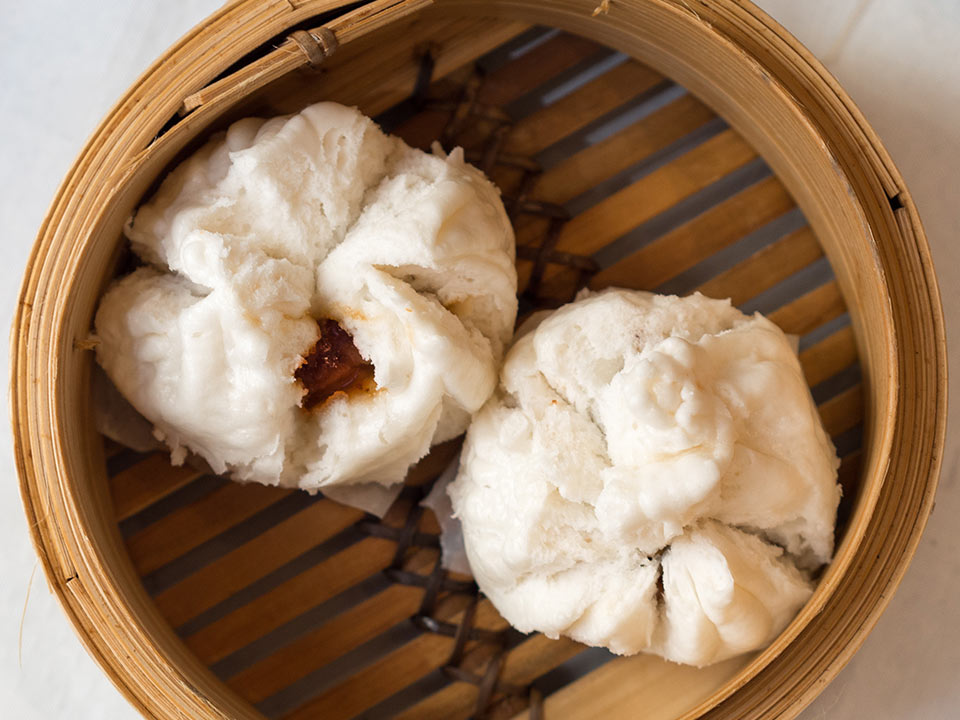
4. Sticky Rice Dumpling (糯米雞)
This sticky rice dumpling, known as lo mai gai in Cantonese, is made of chicken and sticky glutinous rice wrapped in a lotus leaf. The rice is steamed with mushrooms, dried scallops, and lap cheung (Chinese sausage). The dumpling is moist and sticky with a meshy texture, offering a delicious blend of saltiness and umami flavor.
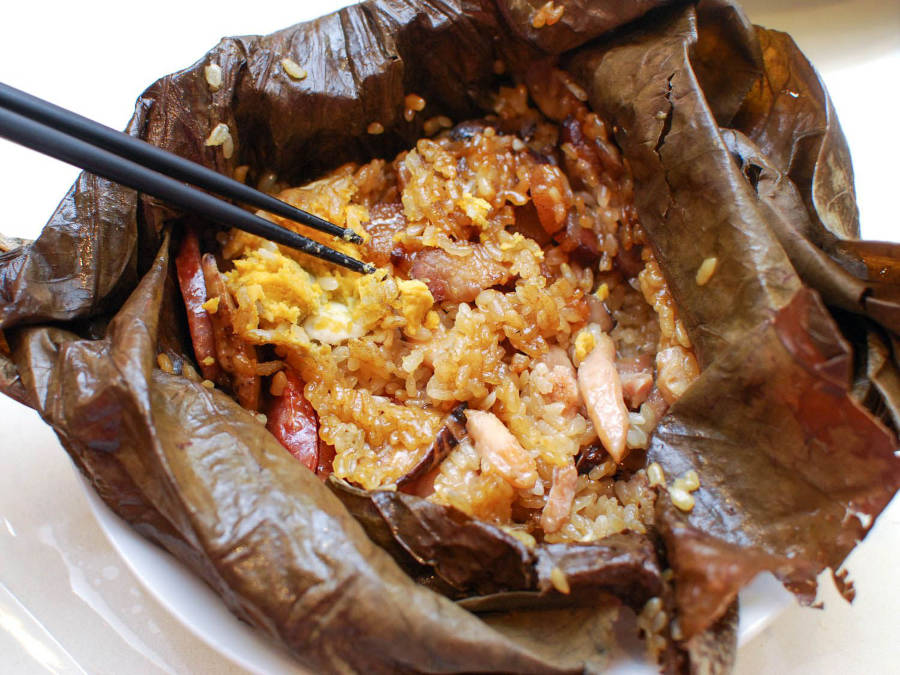
5. Radish or Turnip Cake (蘿蔔糕)
Not your typical cake, this dim sum favorite is the ultimate comfort food. A must-have during Chinese New Year festivities, radish cake is considered auspicious, as its name sounds similar to the Chinese word for “good fortune.” It’s traditionally made with a mixture of Chinese sausage or Jinhua ham, dried shrimp, shredded radish, and rice flour. After steaming, it’s sliced and pan-fried to achieve a crispy exterior and soft, spongy interior. Often served with chili XO sauce for an extra kick, radish cake is a beloved dish at One Dim Sum, a renowned dim sum restaurant in Hong Kong.
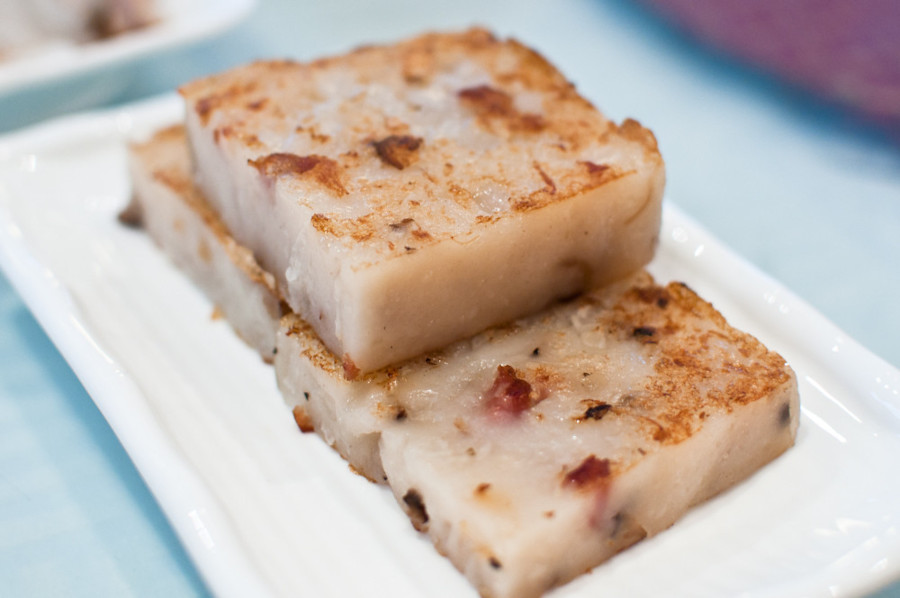
6. Fried Taro Dumpling (芋角)
Fried taro dumplings, known as wu gok, are a visually stunning dim sum pastry with a distinctive honeycomb appearance. To make them, taro is cooked until soft, then mixed with flour to create meshy taro balls. These balls are filled with sautéed ground pork, seasoning, and vegetables before being deep-fried. Wu gok is crispy and airy on the outside, while inside, it’s soft with a delicious salty-sweet flavor.
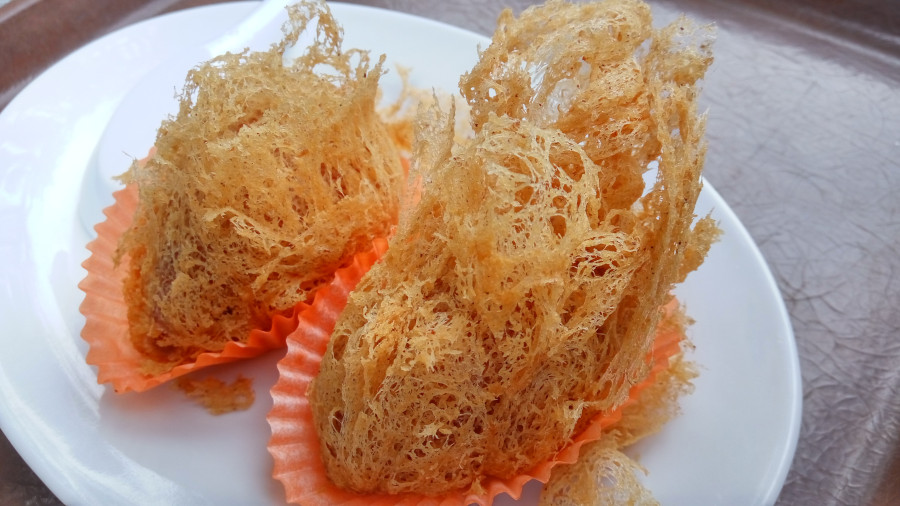
7. Pork Ribs (排骨)
Steamed pork ribs, known as pai gwut in Cantonese, are a popular dish. Mini rib bites are cooked with fermented black beans, soy sauce, and sugar, then garnished with green or red pepper. This simple dish is smooth, tender, and really brings out the flavor of the pork. Some people like to add vinegar on top to reduce any strong smell.
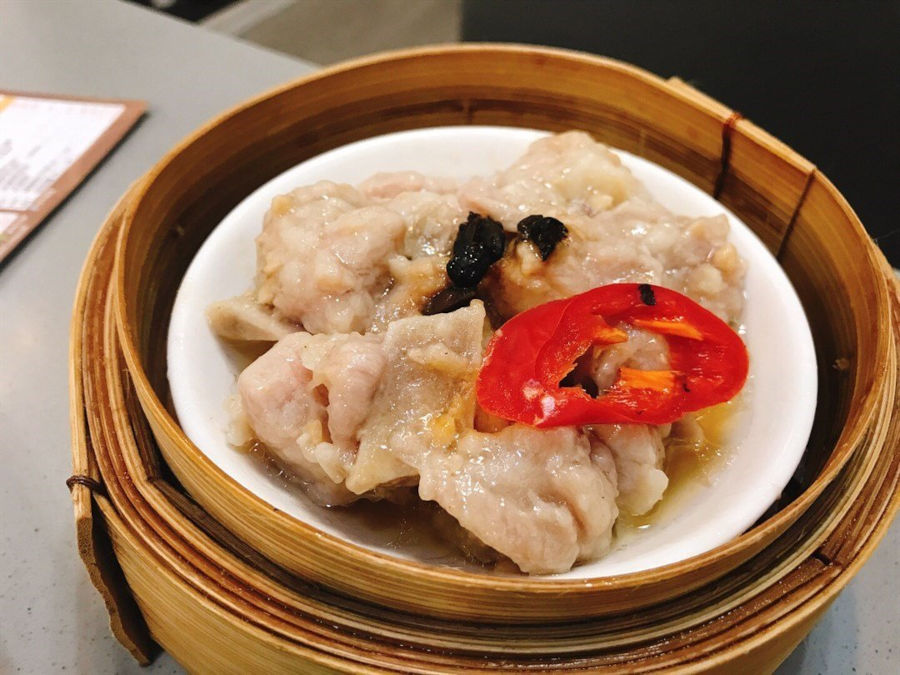
8. Rice Noodle Rolls (腸粉)
Cheung fun is a dish of shiny rice noodle rolls served on an oval plate. It’s made by mixing rice flour, starch, and sticky rice flour. The mixture is steamed to create thin rice sheets, which are then rolled. Cheung fun can be served plain with a drizzle of soy sauce or filled with ingredients like shrimp, char siu (barbecue pork), beef, or fried Chinese donut. This dish has a smooth and chewy texture.
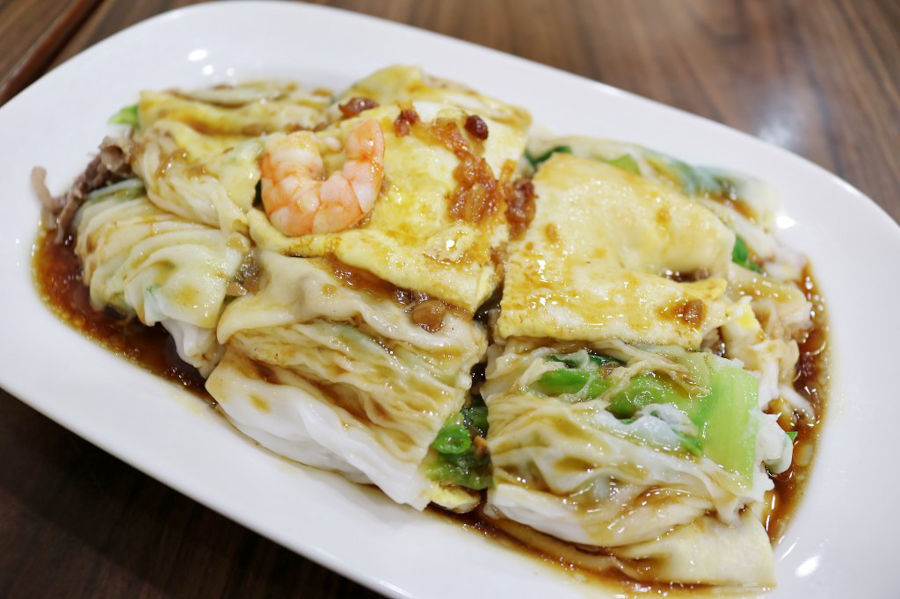
9. Sponge Cake (馬拉糕)
Ma lai gou is a traditional steamed sponge cake in Cantonese cuisine. What makes it special is the airy texture created by trapped air bubbles on the top layer. The cake is made with flour, eggs, lard, and butter, and the mixture is left to ferment for 24 hours to develop the air pockets. Afterward, it’s steamed until cooked. This dessert, often served at the end of a meal, is aromatic, spongy, moist, and fluffy. There’s also a version made with brown sugar that’s slightly sweeter. Ma lai gou is just one of many light dessert options commonly enjoyed at the end of a yum cha meal.
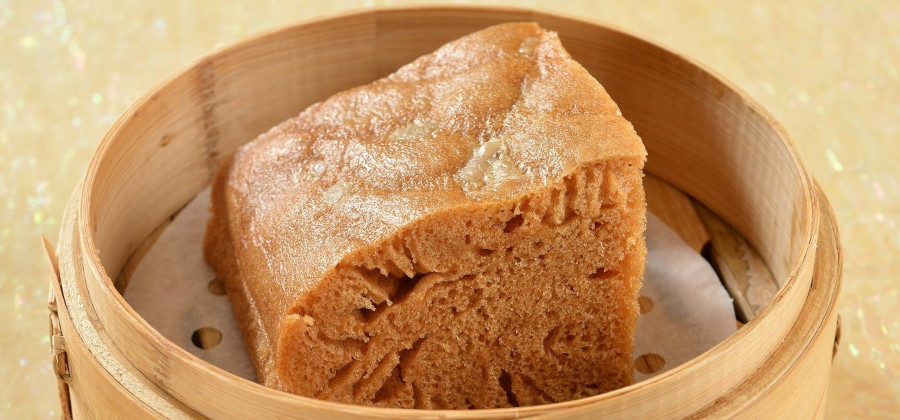
10. Egg Tarts (蛋撻)
Dan taat, the Cantonese counterpart of the English custard tart, comes in a few variations. The tart base can be made with either shortcrust pastry, which is more common in bakeries, or puff pastry, often found in dim sum restaurants.
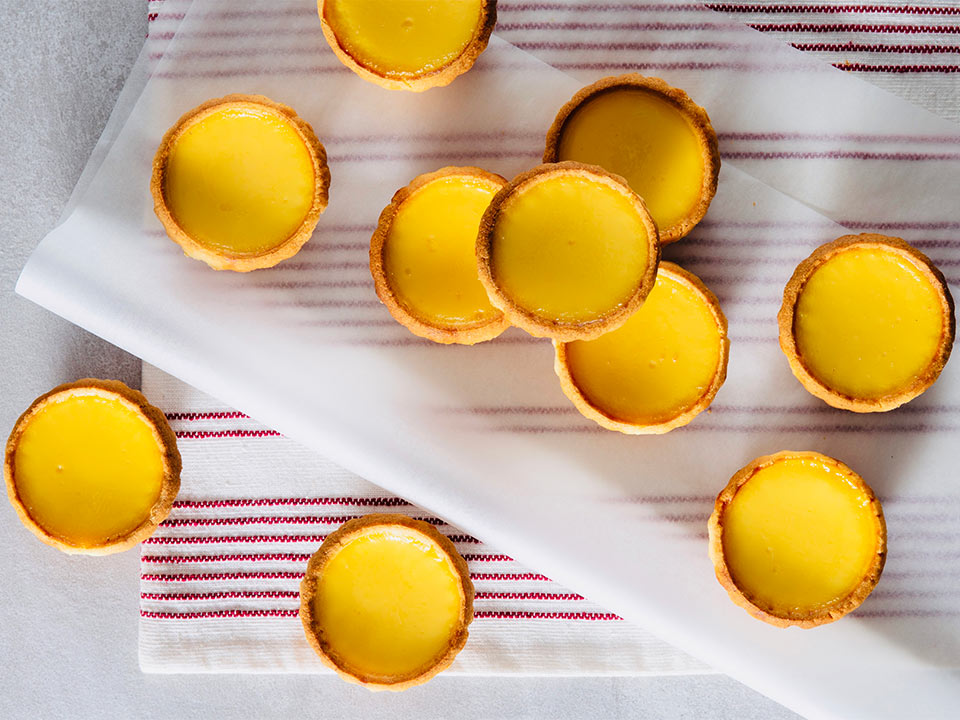
If the tart has a blistered surface and uses puff pastry, it’s known as a Portuguese-style egg tart, commonly found in Macao. This style of tart originated in Lisbon in the 13th century.


Leave a Reply